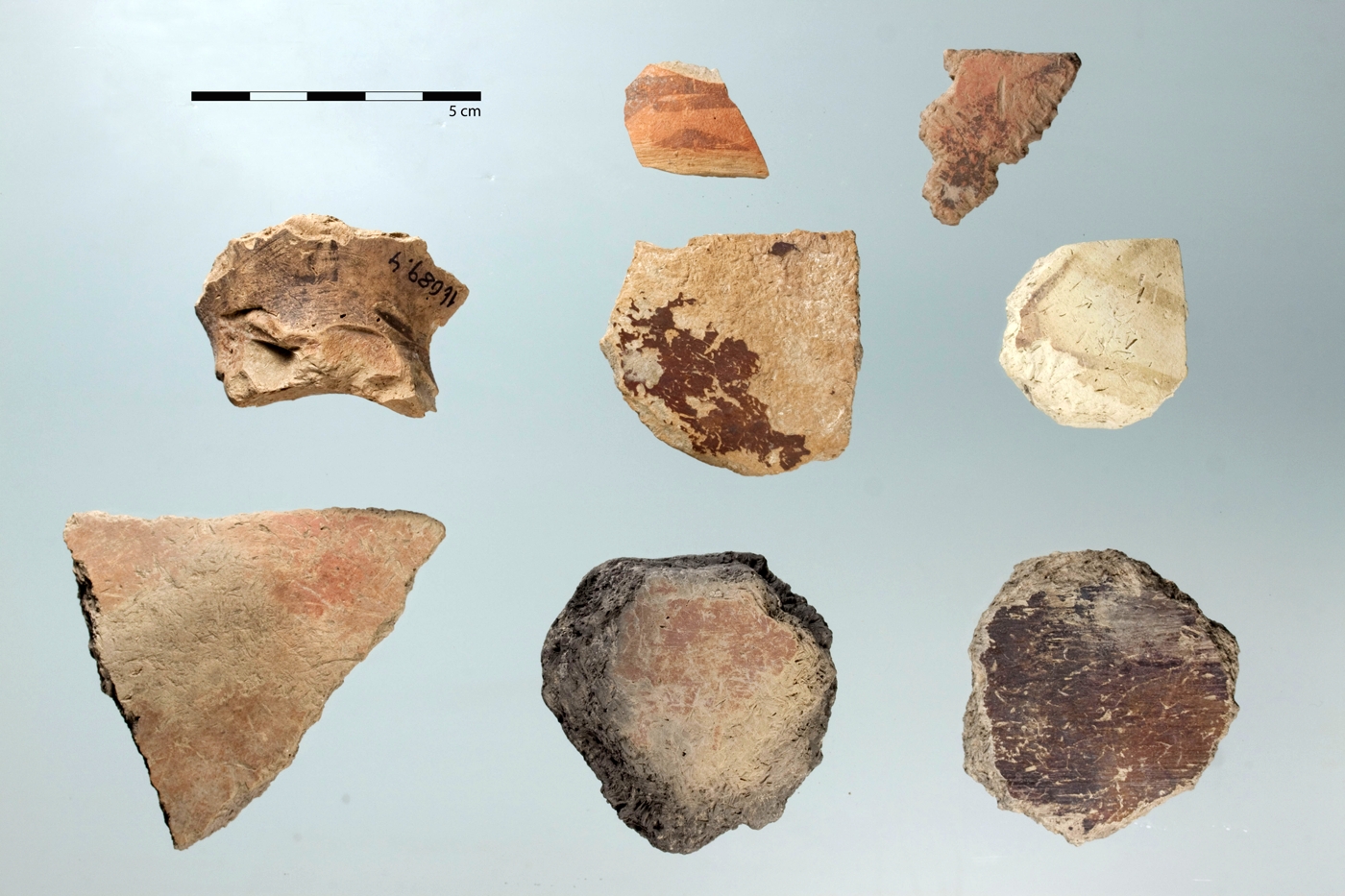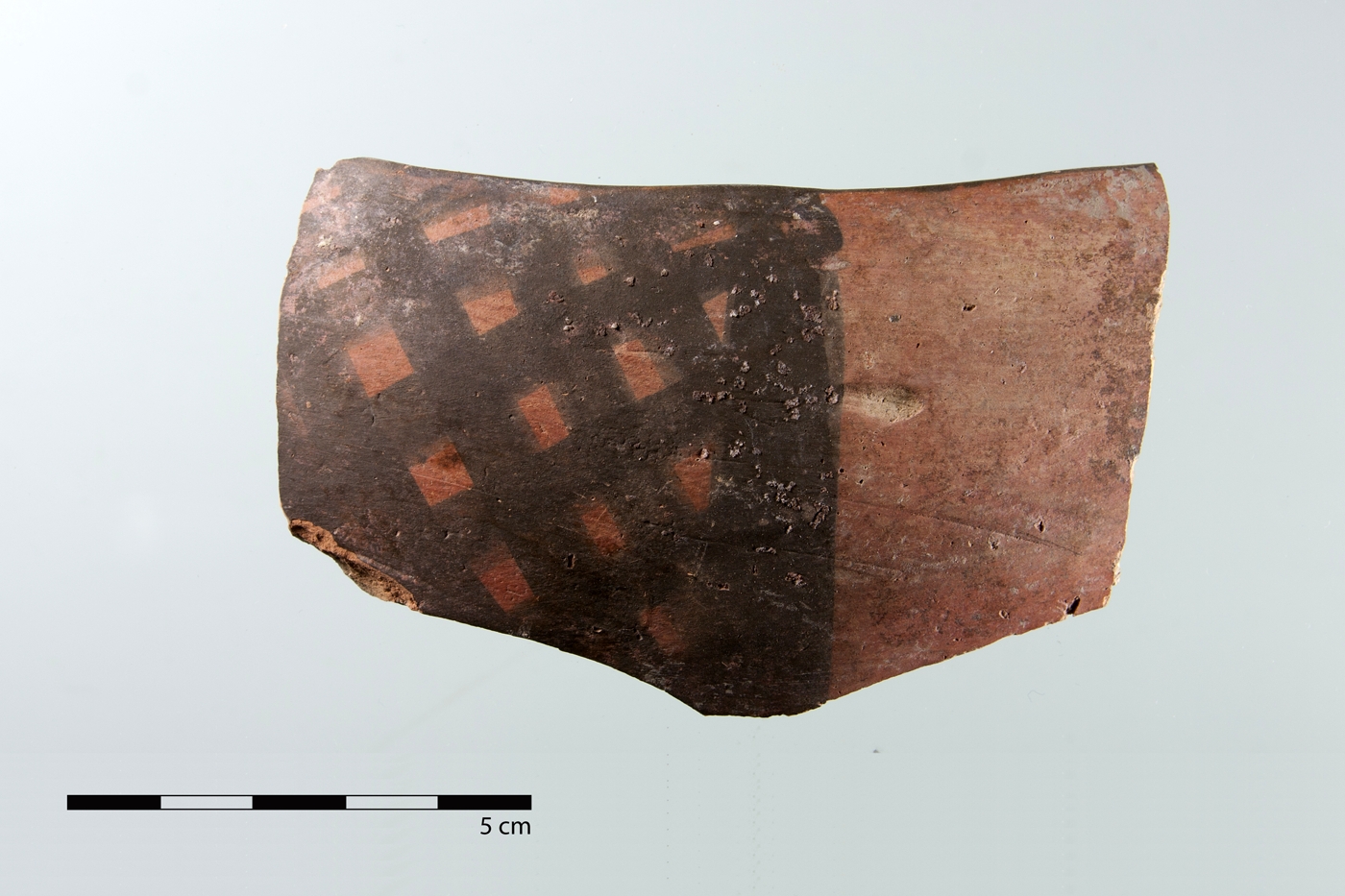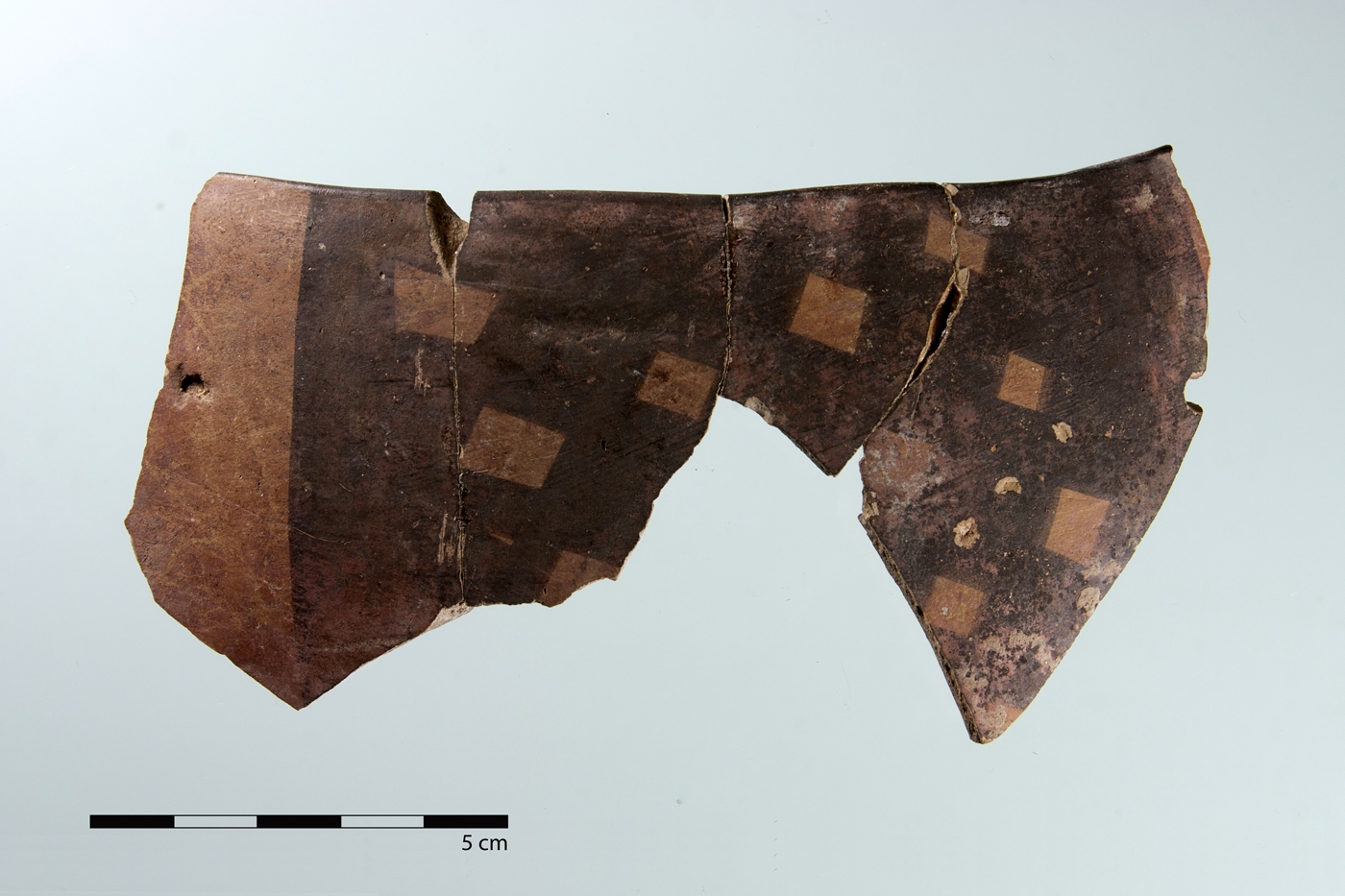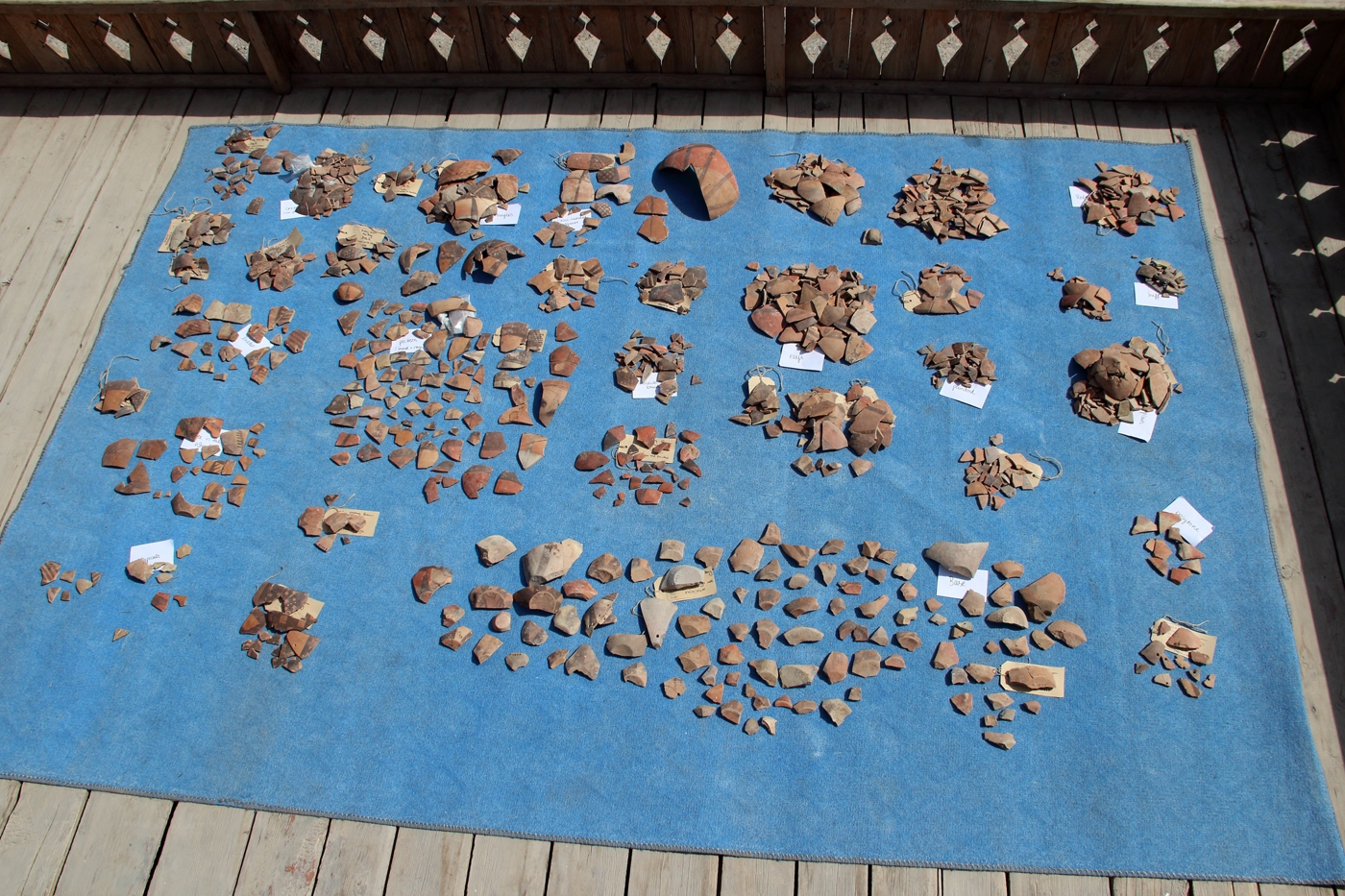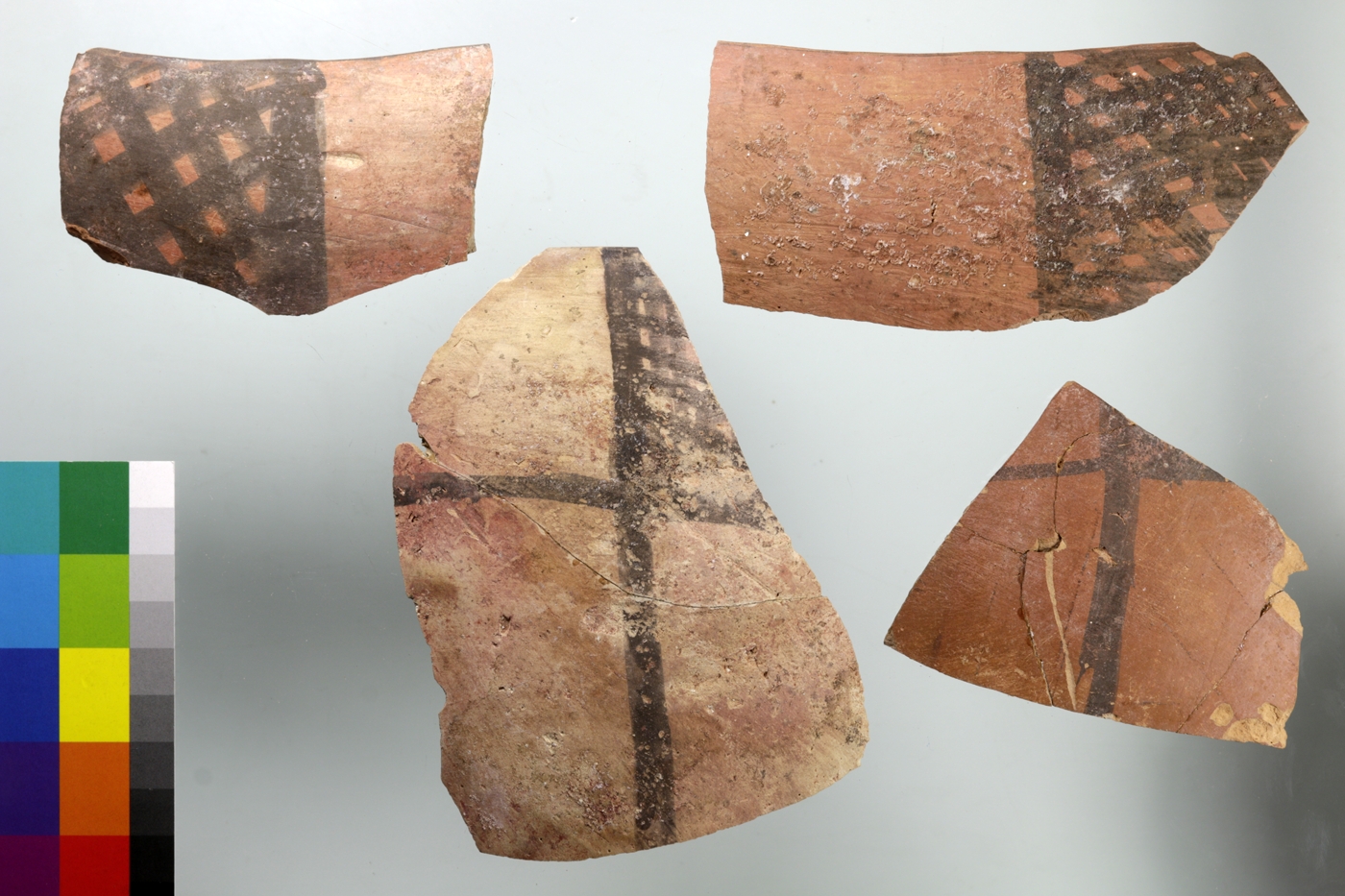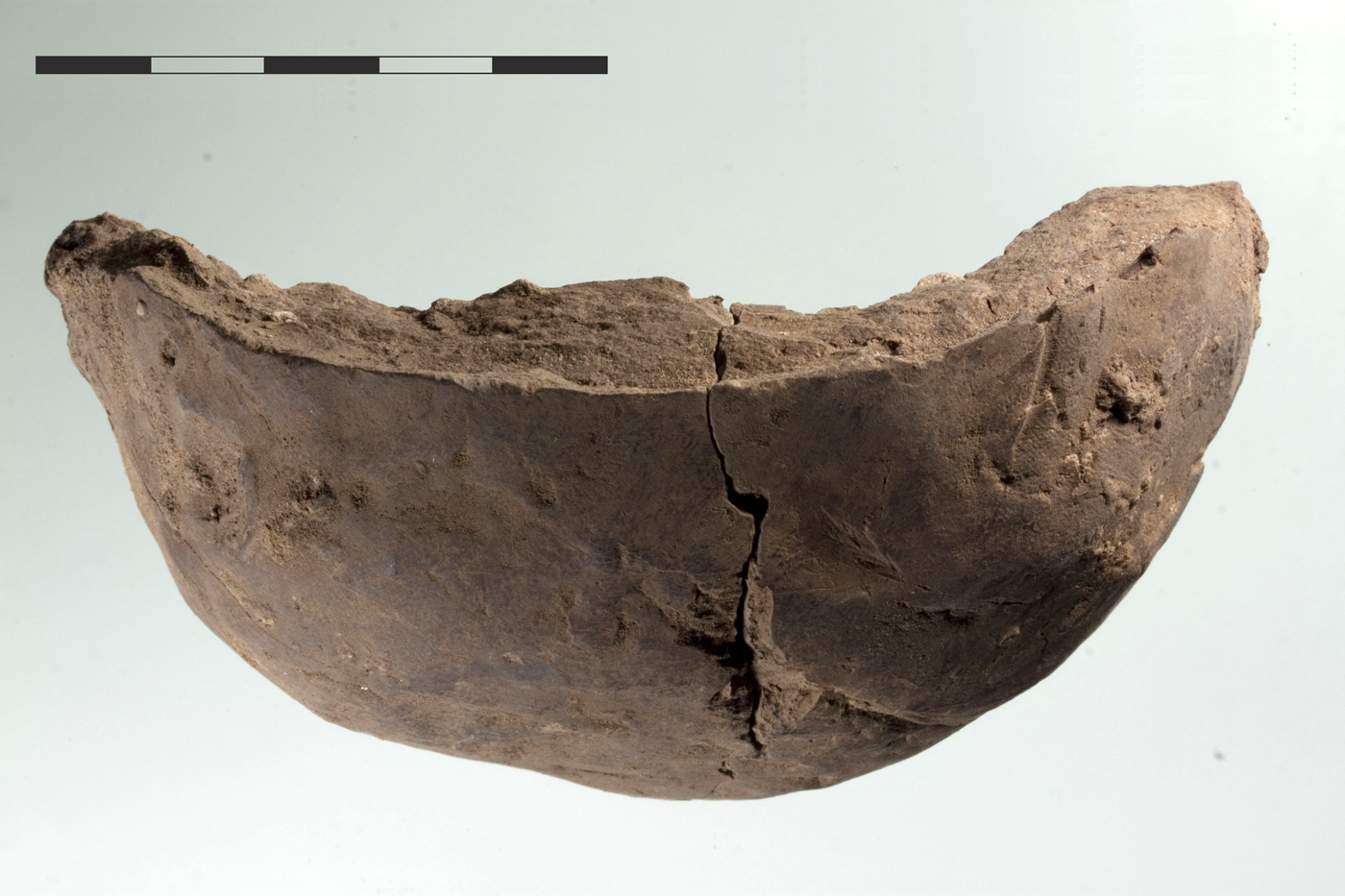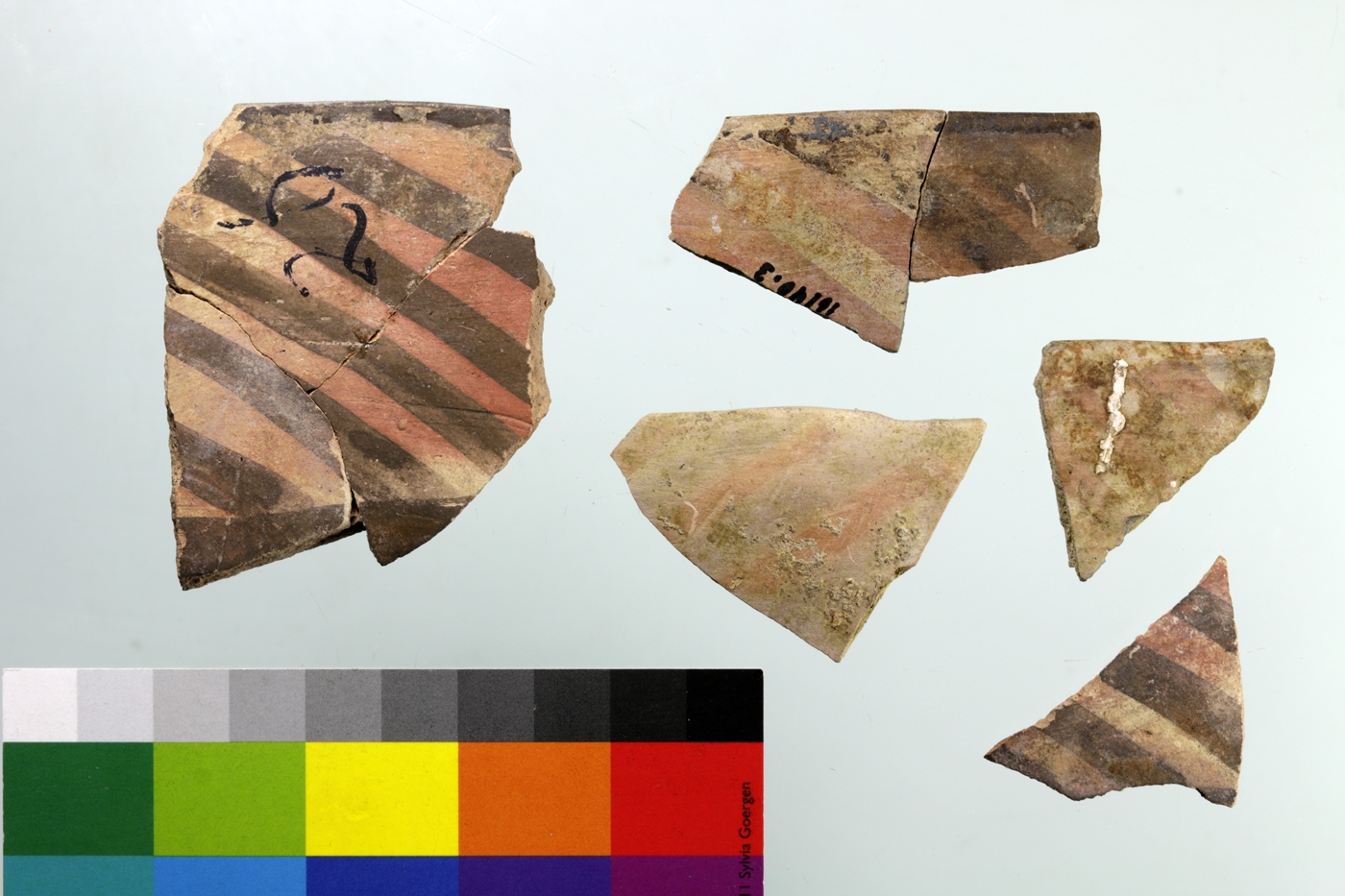Pottery
Ceramic vessels are found in Monjukli Depe in both the Neolithic and Aeneolithic settlement phases. The pottery from the two phases differs fundamentally.
Neolithic Pottery
More than 2000 ceramic sherds have been recovered from the limited excavations of Neolithic levels. The Neolithic wares of the so-called Jeitun Period have thick walls and contain vegetal temper. The fabric core is almost always gray to black in color as a result of a partially oxidizing firing. The vessel surface is carefully smoothed, often polished, and frequently covered with a reddish, brown, or dark brown slip. Occasionally, the pottery is painted with geometric motifs.
The spectrum of shapes consists overwhelmingly of large open forms such as bowls and basins. The technology and shapes are characteristic for the entire Late Neolithic of the Kopet Dag piedmont zone as well as for the Iranian highlands. The paintings are paralleled in other Jeitun-period sites in Turkmenistan.
Aeneolithic Pottery
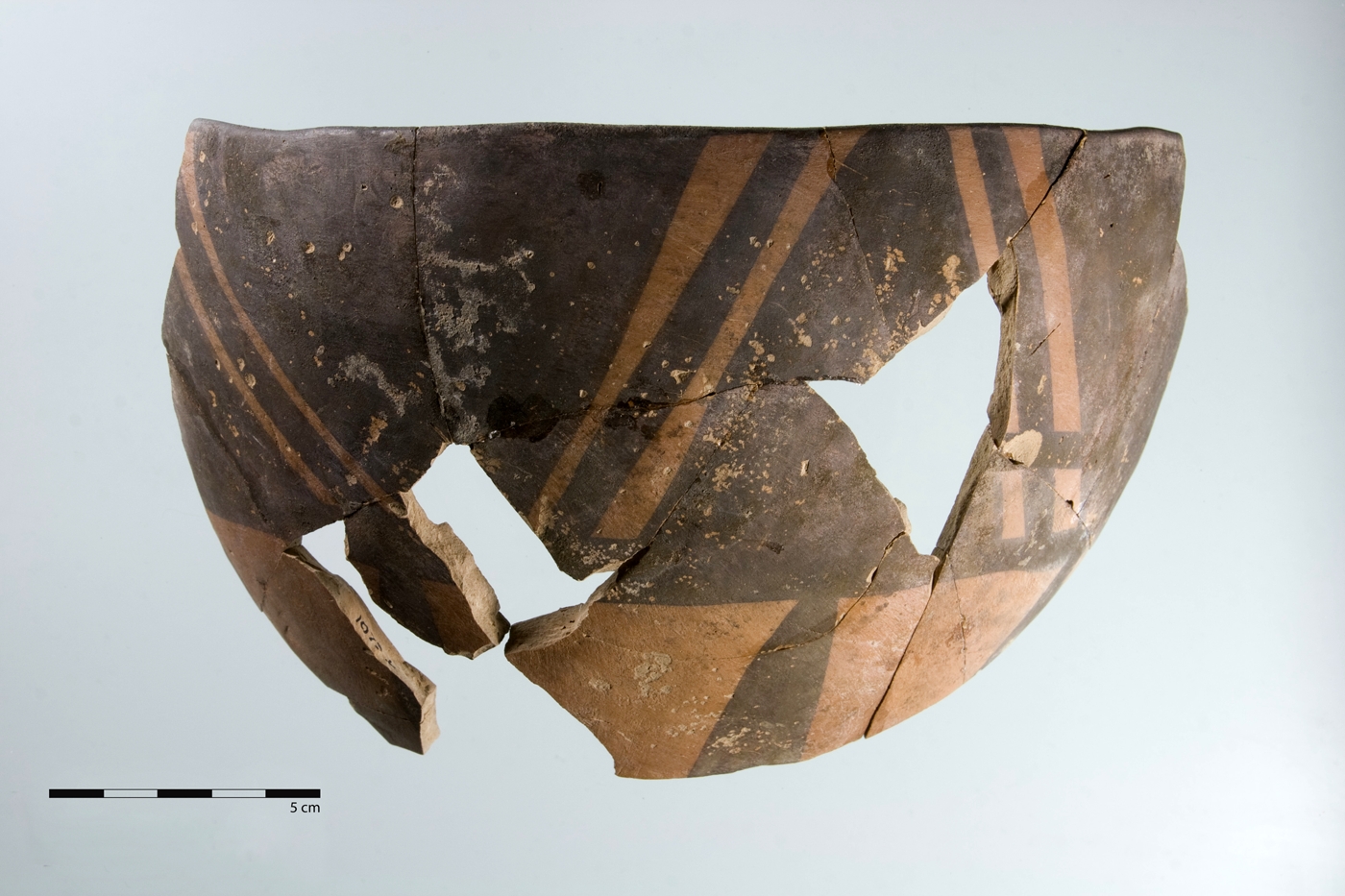
In contrast to the usual expectation, the use of ceramics sank markedly from the Neolithic to the Aeneolithic in Monjukli Depe. In spite of extensive excavations, only somewhat more than 3000 sherds were recovered in the Aeneolithic levels. Based on an extrapolation of these numbers, one new pottery vessel would have been added to the village inventory every five to seven years. Where these vessels were produced is unclear, since signs of kilns or production waste such as ceramic slag are lacking.
The pottery of the Aeneolithic Meana Horizon is markedly finer than the Neolithic pottery at the site. It contains no temper or only very few mineral inclusions. The carefully smoothed surface is in most cases covered with a reddish, or less commonly a watery buff slip, which was applied with a wiping technique. The vessel shapes vary very little, ranging between hemispherical bowls and deep bowls with lightly concave bases. These vessels with very narrow bases and comparatively large rim diameters are also typical for the contemporary north Iranian Chesme-Ali Horizon. Such broad, open shapes are not particularly stable, if they were meant to stand upright.
Vessel decoration consists exclusively of painting, mostly in the form of a broad register at the vessel rim in which various geometric motives could be painted. Thickening rays extended downward from this band toward the vessel's base. If the vessel is turned upside down, one has the impression of seeing a star. On the interior vessels are decorated with broad bands and sweeping lines that are reminiscent of trees or insects.
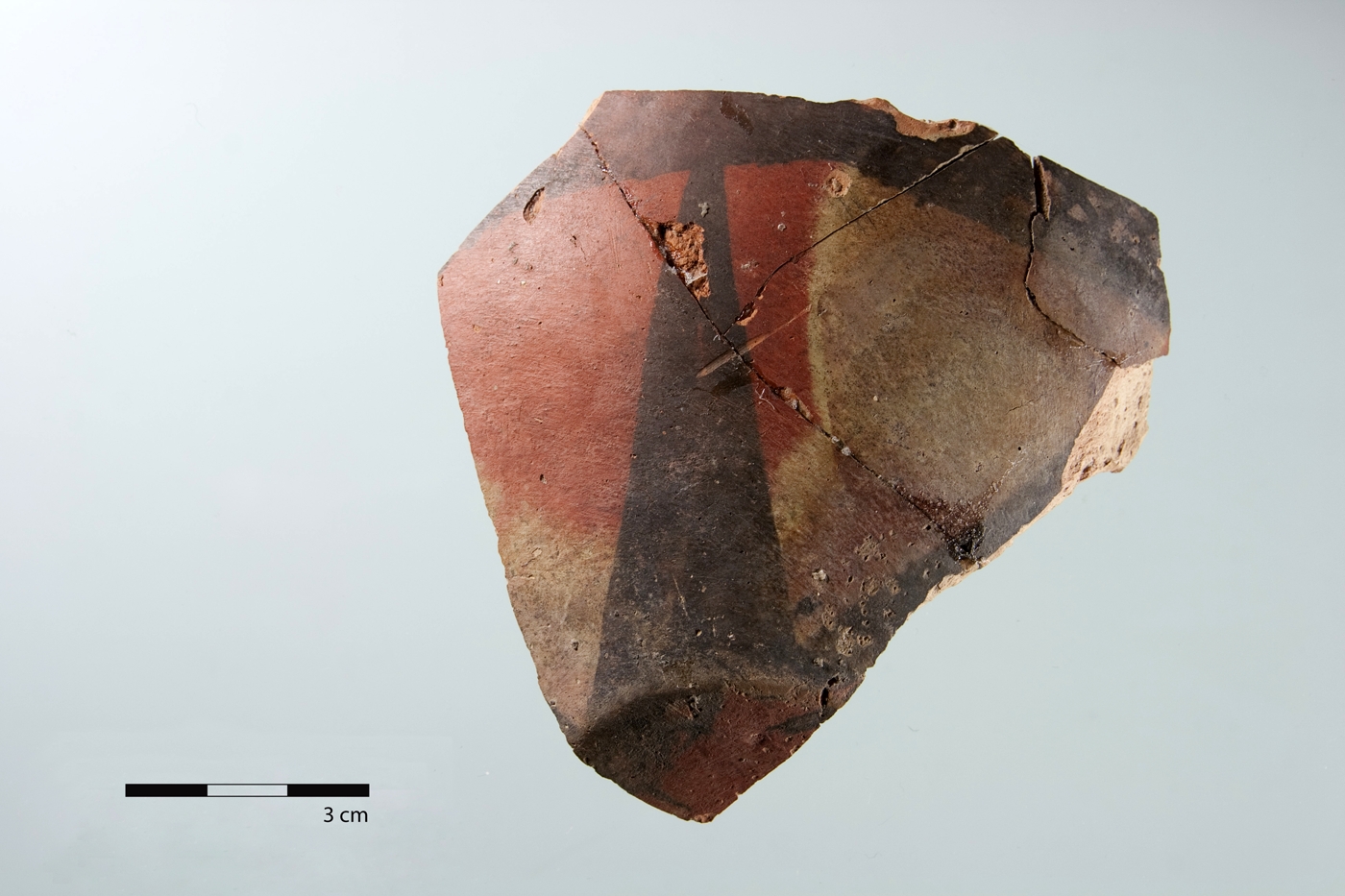 Meana Polytone sherd with painted rays extending upward from the base and reaching the horizontal band along the rim.
Meana Polytone sherd with painted rays extending upward from the base and reaching the horizontal band along the rim.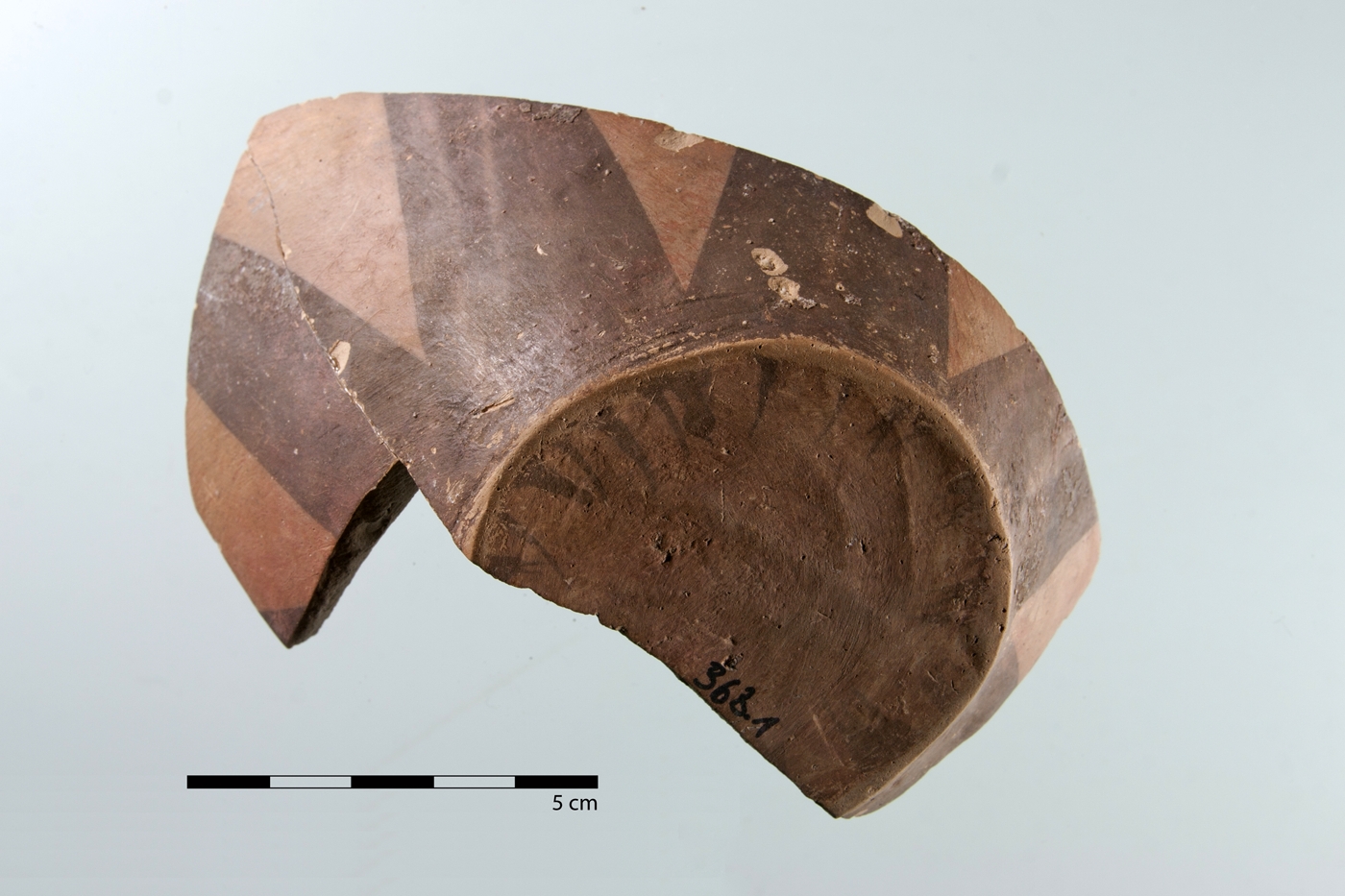 Base of a Meana Black on Red painted vessel with ray pattern forming a star when seen from the bottom. Note the paint strokes (splatters) from the brush on the base. The edge of the base is worn.
Base of a Meana Black on Red painted vessel with ray pattern forming a star when seen from the bottom. Note the paint strokes (splatters) from the brush on the base. The edge of the base is worn.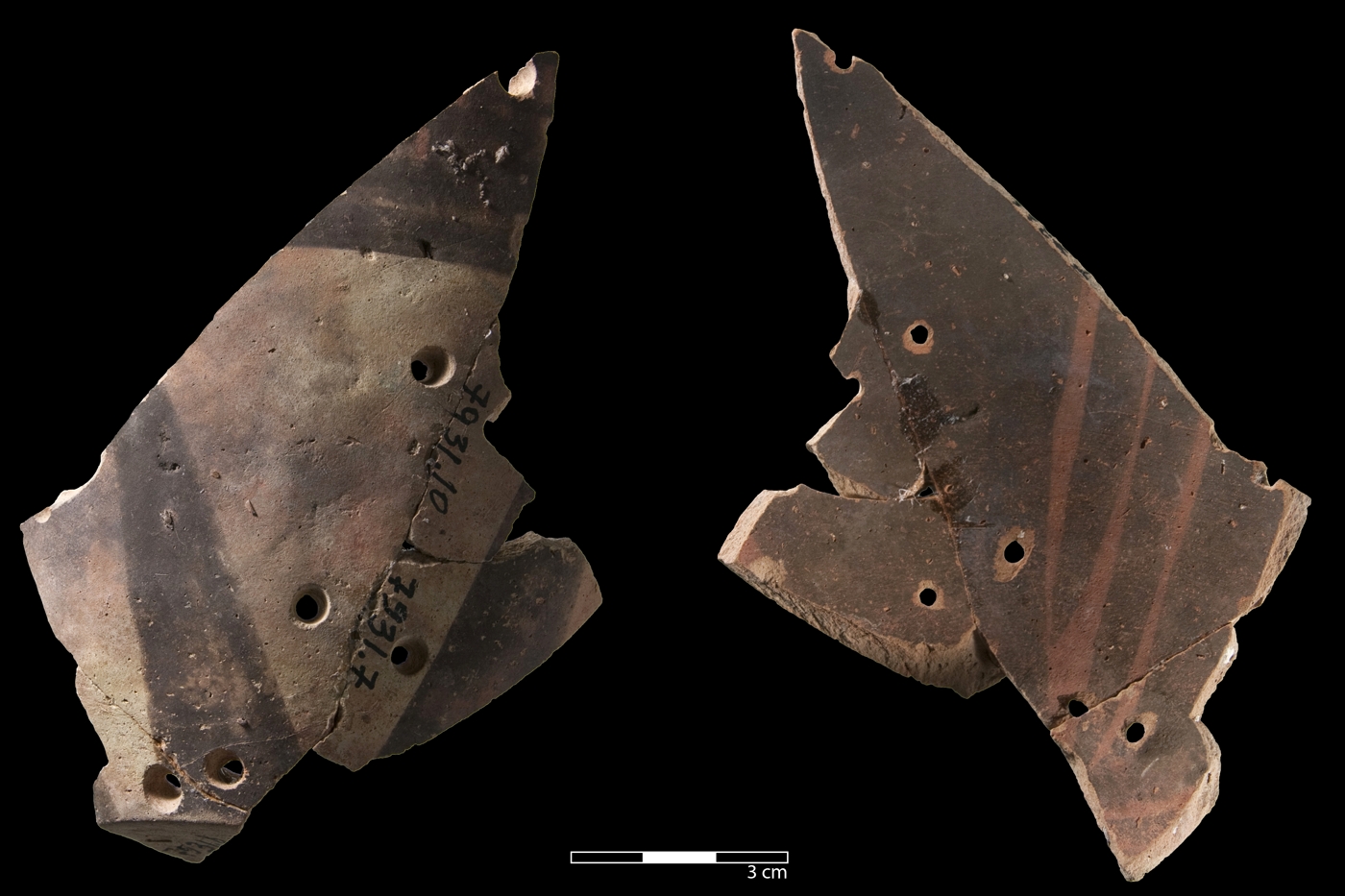 Meana Polytone sherd with multiple repair holes which have been drilled from the exterior (left) to the interior (right).
Meana Polytone sherd with multiple repair holes which have been drilled from the exterior (left) to the interior (right).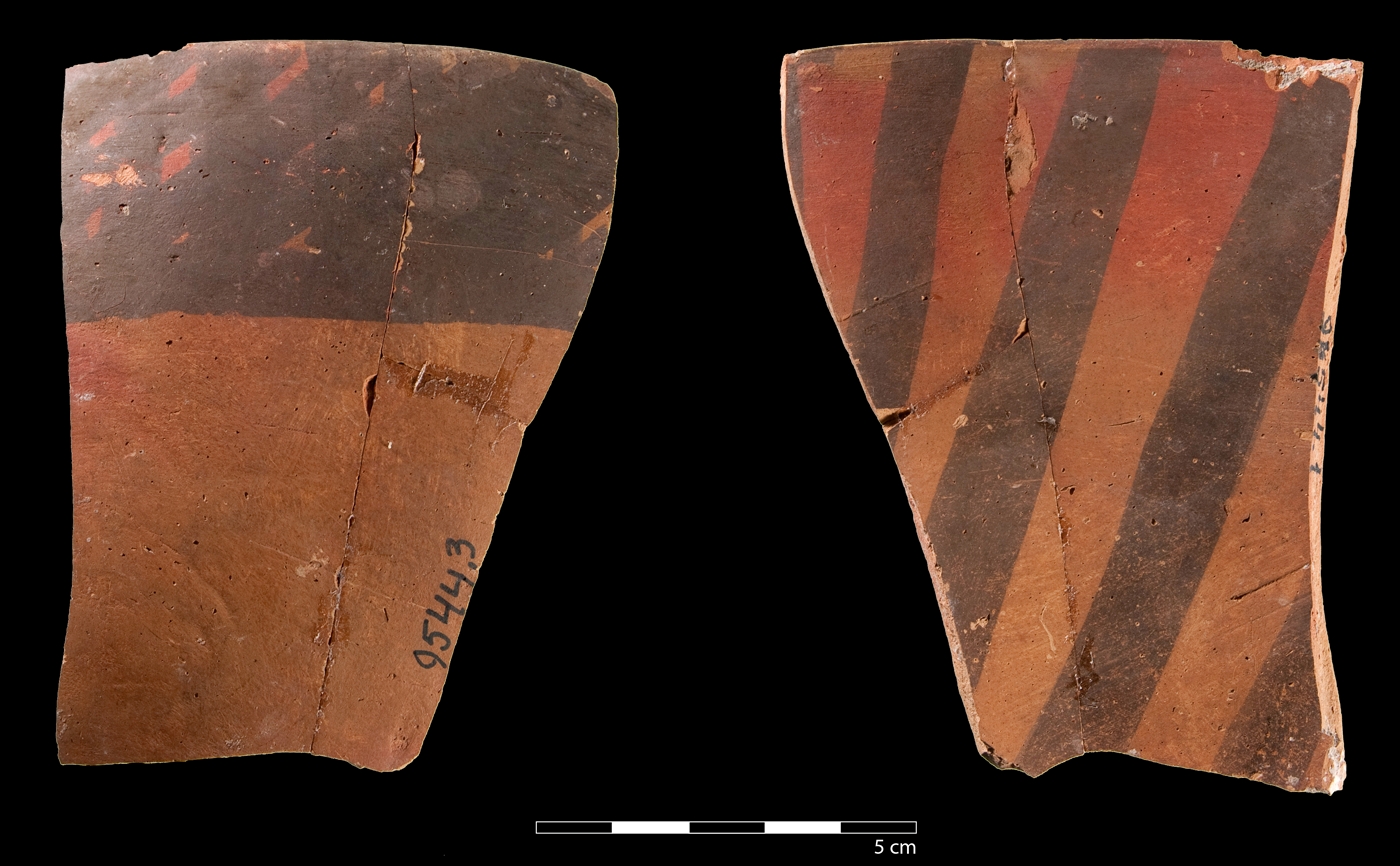 Meana Black on Red rim sherd with crosshatch painting on the exterior (left) and interior stripes (right).
Meana Black on Red rim sherd with crosshatch painting on the exterior (left) and interior stripes (right).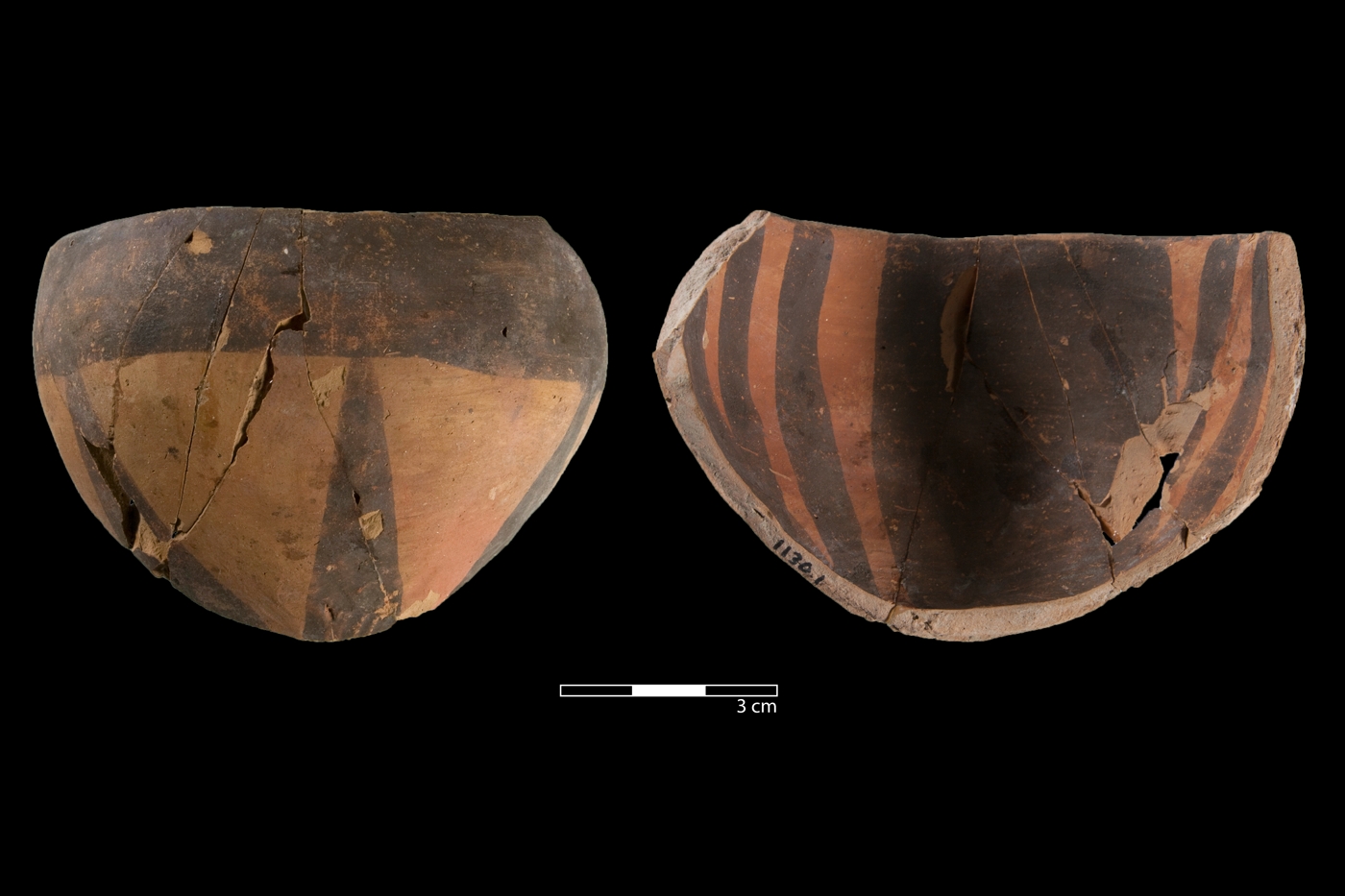 Small Meana Black on Red incurved rim bowl with painted rays extending upward from the base and a horizontal band along the rim, forming the typical Meana Horizon star motif when viewed from below.
Small Meana Black on Red incurved rim bowl with painted rays extending upward from the base and a horizontal band along the rim, forming the typical Meana Horizon star motif when viewed from below.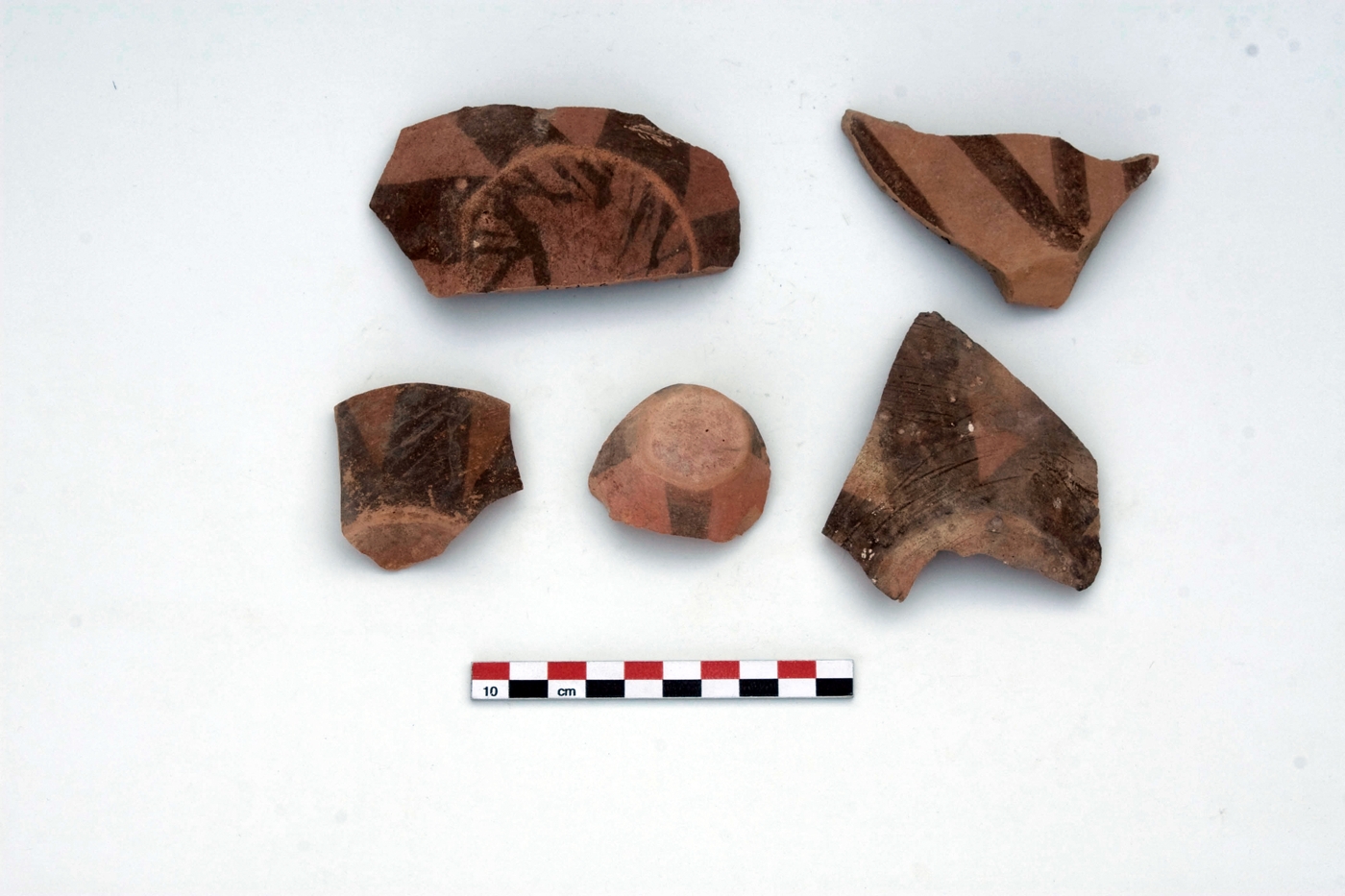 Meana Black on Red bases with rays extending upwards from the base. Viewed from the bottom, they present a star-shaped pattern. The edges of the slightly concave bases are heavily worn, indicating that the vessels have been moved around a lot during their use.
Meana Black on Red bases with rays extending upwards from the base. Viewed from the bottom, they present a star-shaped pattern. The edges of the slightly concave bases are heavily worn, indicating that the vessels have been moved around a lot during their use.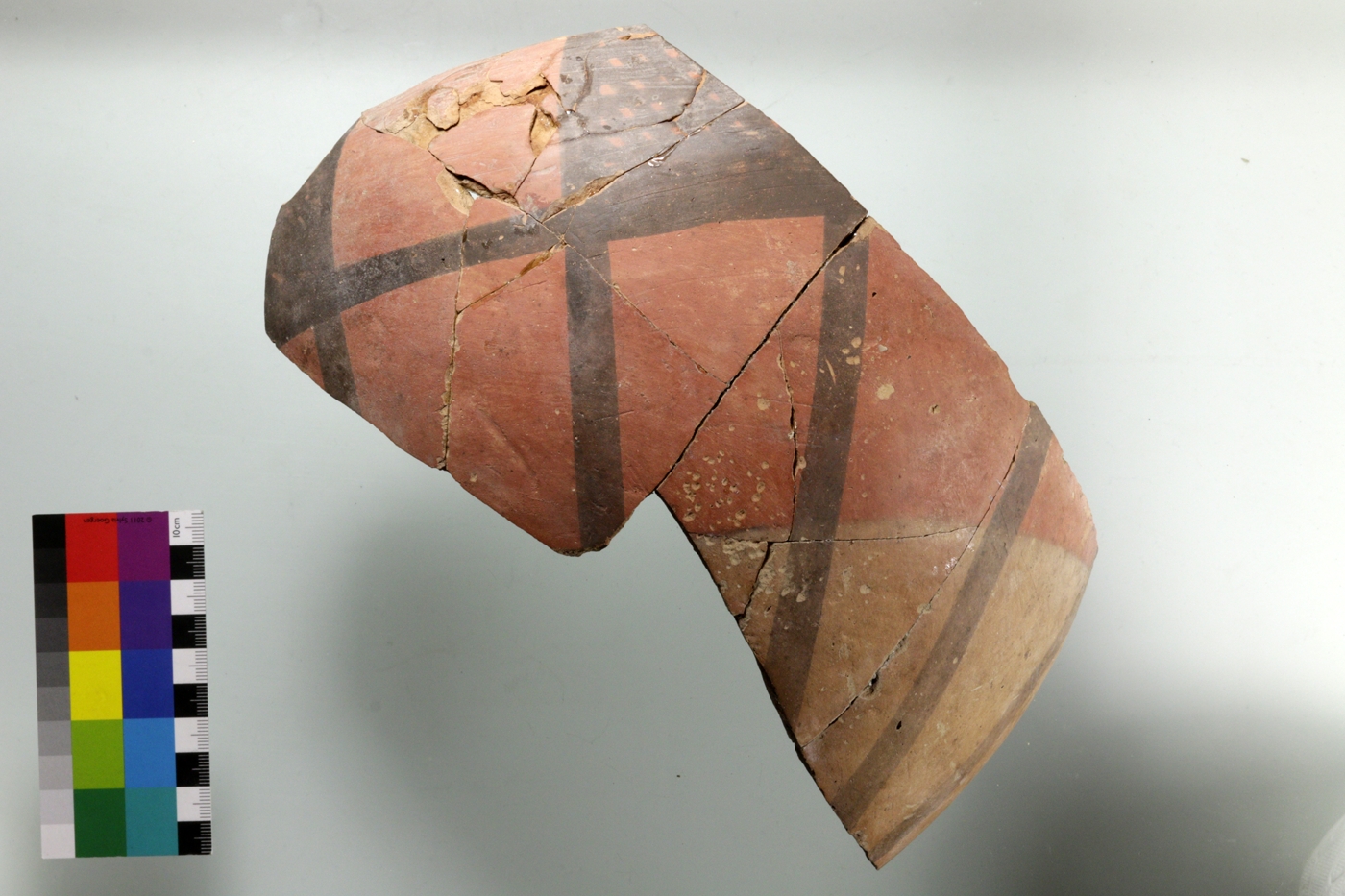 Large Meana Black on Red incurved rim bowl with crosshatched rectangles along the rim and lines towards the base. The lighter reddish color at the lower part is probably the result of firing the vessels that were stacked in one another.
Large Meana Black on Red incurved rim bowl with crosshatched rectangles along the rim and lines towards the base. The lighter reddish color at the lower part is probably the result of firing the vessels that were stacked in one another.
Other Containers
The small number of ceramic vessels makes it likely that the inhabitants of Monjukli Depe also used non-ceramic containers. Occasionally, we find unfired clay vessels that are similar in their texture to the Aeneolithic pottery. In addition, there are a few stone vessels. The negative impression of a basket that was preserved in one house also attests to the sporadic use of containers made of organic materials. Nonetheless, non-ceramic containers are documented only in small numbers. Most likely the residents of Monjukli Depe did not require many vessels for everyday use.
These observations raise the question of the role of Aeneolithic pottery vessels played in Monjukli Depe. Most vessels were found in an exterior area, specifically in the Eastern Midden, a central spot in the settlement used for communal feasts. It is therefore possible that the vessels were used in the context of collective consumption of food and drink and were not primarily objects of everyday use.
For further reading, see Schönicke in Pollock et al. (eds.) 2019; Daszkiewicz in Pollock et al. 2011; Daszkiewicz in Pollock et al. 2013.
